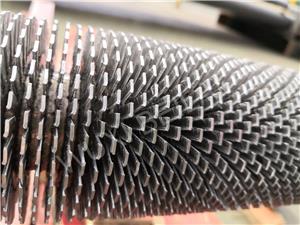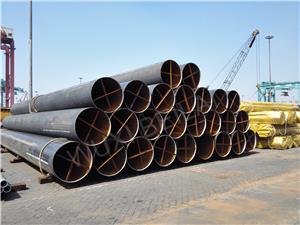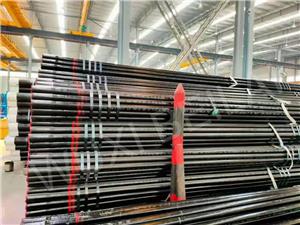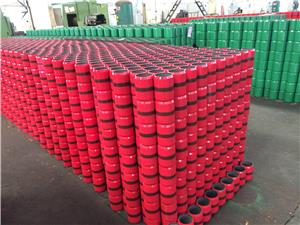How to Enhance Pipeline Corrosion Resistance: A Comprehensive Guide by BEILAI Group
In the oil, gas, and petrochemical industries, ensuring the long-term performance and safety of transmission systems depends heavily on the Pipeline Corrosion Resistance of materials used. Corrosion is one of the leading causes of pipeline failure, resulting in leaks, environmental risks, and expensive repairs. For Thin-Walled Line Pipe, enhancing corrosion resistance is even more crucial due to its reduced wall thickness, which makes it more susceptible to corrosion over time.
As a trusted supplier of high-performance pipeline products, BEILAI Group shares proven strategies to boost both general Pipeline Corrosion Resistance and the longevity of Thin-Walled Line Pipe in diverse applications.
1. Understanding Corrosion in Thin-Walled Line Pipe
Corrosion in Thin-Walled Line Pipe can occur both internally and externally. The thinner wall makes it essential to proactively control all potential corrosive factors.
- Internal Corrosion: Triggered by the presence of CO₂, H₂S, or water in transported fluids.
- External Corrosion: Often influenced by soil moisture, oxygen exposure, or marine environments.
Since Thin-Walled Line Pipe has less material mass to resist these effects, effective protection methods are mandatory.
2. Selecting Corrosion-Resistant Materials
Choosing appropriate materials is the first step in enhancing Pipeline Corrosion Resistance, especially for Thin-Walled Line Pipe used in high-pressure or corrosive environments.
- Carbon Steel with Alloy Elements: Elements like chromium and molybdenum significantly increase corrosion resistance.
- Stainless Steel Line Pipe: Offers natural resistance to oxidation and harsh chemicals.
- High-Performance Alloys: Suitable for sour service or subsea environments where corrosion risks are higher.
BEILAI supplies Thin-Walled Line Pipe in various corrosion-resistant grades to meet project-specific demands.
3. Protective Coatings for Long-Term Defense
Applying advanced coatings is a highly effective way to enhance the Pipeline Corrosion Resistance of Thin-Walled Line Pipe.
- Fusion Bonded Epoxy (FBE): A common external coating that prevents moisture penetration.
- 3LPE and 3LPP Systems: Provide enhanced protection with mechanical strength and chemical resistance.
- Internal Coatings: Epoxy and polyurethane linings improve flow and shield the inner surface of Thin-Walled Line Pipe from corrosion.
BEILAI applies coatings under strict quality control, ensuring maximum adhesion and effectiveness.
4. Cathodic Protection Integration
Cathodic protection is a key electrochemical method to defend against external corrosion, particularly for underground or submerged Thin-Walled Line Pipe.
- Sacrificial Anode Systems: Magnesium or zinc anodes corrode in place of the pipe.
- Impressed Current Systems: Use a power source to direct corrosion away from the pipeline wall.
All BEILAI Thin-Walled Line Pipe is designed for full compatibility with cathodic protection systems.
5. Chemical Inhibitors for Internal Protection
For pipelines that carry corrosive fluids, internal corrosion inhibitors are essential to protect Thin-Walled Line Pipe from rapid degradation.
- Continuous or Batch Dosing: Inhibitors are added into the system to form protective films.
- Pipeline Pigging: Regular cleaning helps remove deposits and maintain surface integrity.
BEILAI provides consulting on corrosion inhibitors tailored to your transported media and pipe material.
6. Welding Practices for Corrosion Control
Proper welding and post-weld treatment help prevent localized corrosion, especially at joints and heat-affected zones in Thin-Walled Line Pipe.
- Use of Low-Hydrogen Electrodes
- Stress-Relief Heat Treatment
- Precision Control of Weld Beads
BEILAI manufactures Thin-Walled Line Pipe with weldability in mind, ensuring seamless installation and operational safety.
7. Monitoring and Inspection Protocols
Regular inspection and monitoring programs help maintain Pipeline Corrosion Resistance in active systems.
- Corrosion Coupons and Probes: Placed inside pipelines to track real-time corrosion rates.
- Environmental Analysis: Regular soil and fluid testing can detect early signs of corrosive conditions.
- Digital Monitoring Integration: BEILAI’s line pipes support IoT and SCADA-based corrosion monitoring systems.
For Thin-Walled Line Pipe, frequent monitoring is especially important to detect wall thinning before failure.
8. Quality Assurance and Testing
BEILAI Group conducts stringent quality assurance on all Thin-Walled Line Pipe products:
- Hydrostatic Testing
- Ultrasonic and Radiographic Testing
- Impact, Hardness, and Tensile Testing
This ensures every pipe delivered offers maximum Pipeline Corrosion Resistance and conforms to international standards like API 5L and ISO 3183.
Conclusion: BEILAI Delivers Corrosion-Resistant Thin-Walled Line Pipe Solutions
Enhancing Pipeline Corrosion Resistance is vital to infrastructure safety and longevity. For Thin-Walled Line Pipe, this becomes even more critical. Through the use of high-quality materials, advanced coatings, cathodic protection, and regular monitoring, BEILAI helps clients extend the lifespan of their pipelines while minimizing maintenance costs.
With a commitment to innovation and performance, BEILAI Group remains your ideal partner for corrosion-resistant Thin-Walled Line Pipe across petrochemical, gas, and energy projects.




